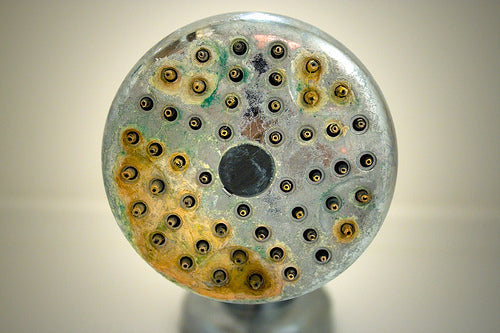What Are The White Stains On My Faucets?
You might have noticed that the mouth of most of your stainless steel water faucets, including the shower, is catching a whitish stain that won’t budge. Do you know what that is?
That is calcium deposits that have accumulated over time from the water that passes through the faucet. This calcium build-up is also called limescale, and it is a dissolved mix of calcium salts that are solid at room temperature. It starts slowly then develops to become a thicker layer that gets even harder to remove. And the main reason for its build-up in the first place is when the water that passes through the pipes is hard water containing magnesium and calcium minerals.
This whitening does not only occur on the faucets but also in the showerhead, drainages, plus any appliance that you constantly boil or heat water with. Suppose you notice a yellowish red deposit instead of white; that indicates the water is high in iron.
Now, you must be wondering if you can remove this build-up by yourself, and the good news is that you can. But this method will only be effective if the deposit is only on the faucet and drainages. If they are further inside the pipe, then you might need a plumber. And for a long-term solution is to install FilterSmart devices to filter out the calcium and magnesium as the water gets into your home.
Regardless here are some of the household materials you will need:
- White vinegar
- soft rags
- Rubber bands
- Sandwich-sized plastic bags
- Sponge
Alternatively, you can buy a store mixed concoction that does the work or use other methods. Just be sure that you follow the instructions given on the packaging.
The process of removing the calcium deposits
On taps
The first thing you should do is clean the faucet and ensuring that there is no running or dripping water. Next, soak the soft rags into the white vinegar, wrap them around the taps with the deposits, and secure them using rubber bands.
Let them stay there for about an hour and when you remove them, clean the faucet using a wet sponge. If the process is successful, most of the deposits will come right off. But if they are a bit stubborn, consider leaving the stripes longer, perhaps overnight.
On shower heads
Here, you use the plastic bags to fill them with vinegar and tie it on the showerhead holding it in place with a rubber band. Ensure that the faucet with the deposits is in contact with the vinegar. The cleaning process is done the same as the tap, and if the deposits prove to be stubborn, consider soaking it a while longer.
How to prevent Calcium build-up
As aforementioned, this technique might only work at the faucet where you can physically see the deposits. When you might not know is that the deposits may be further inside the pipe. Significant indicators that this is the case are usually a change in water pressure or bursting and cracking of pipes due to the increased pressure.
When this happens, the best course of action is to install salt-free water softeners and fix the broken pipes. When you do this, everything will resume back to normal.






